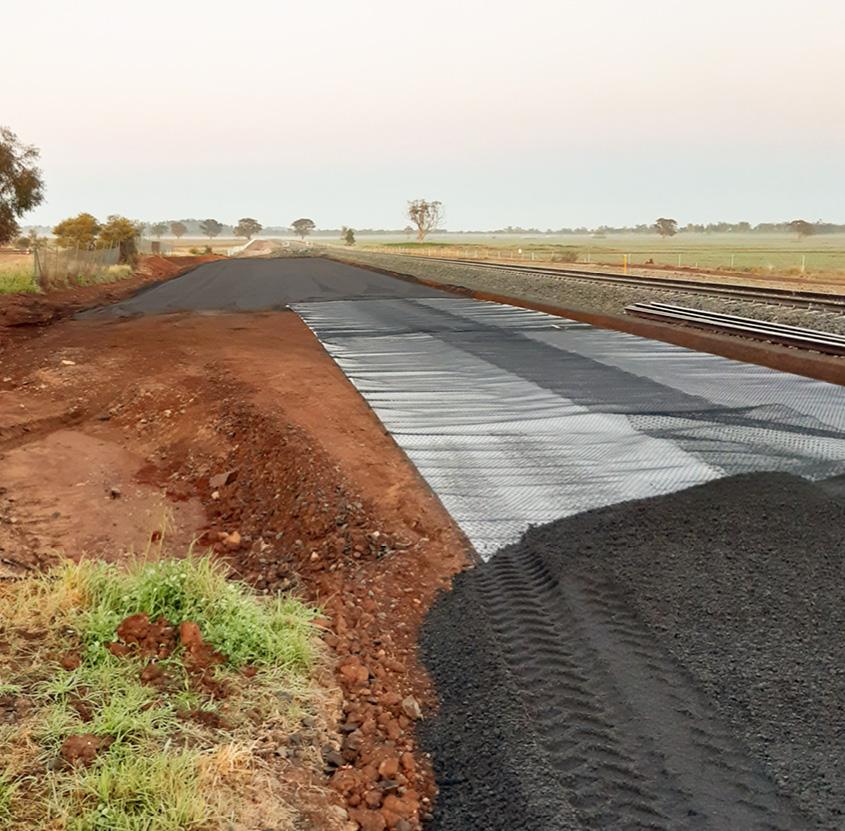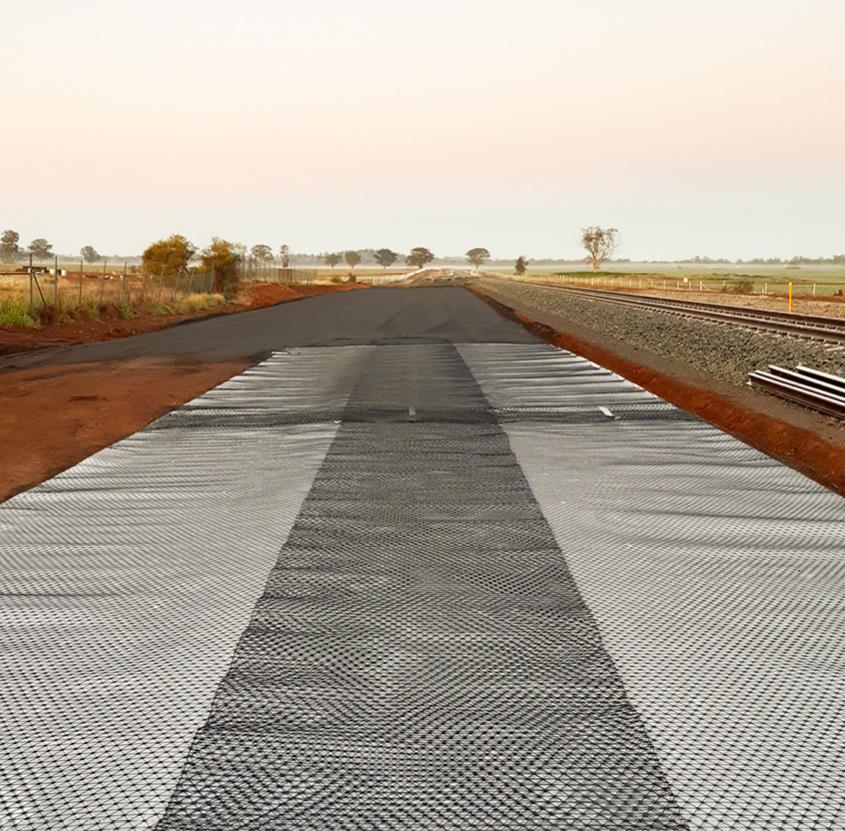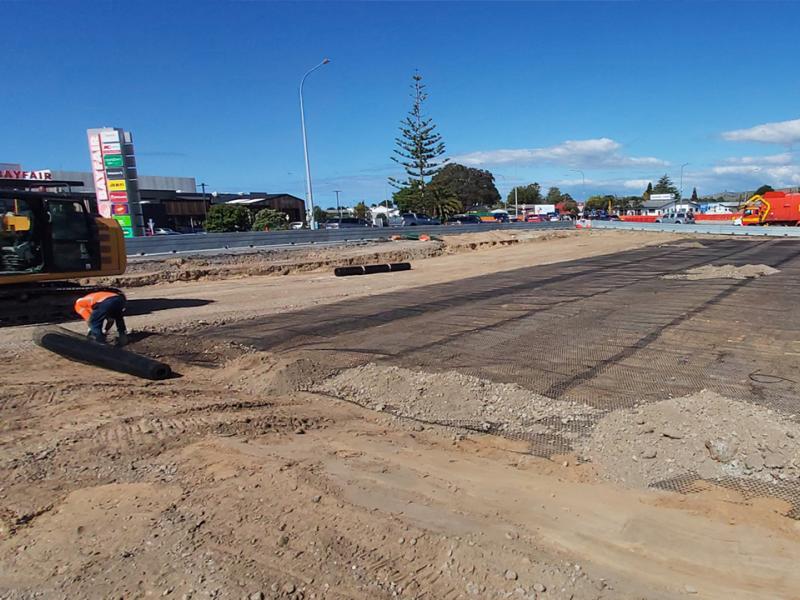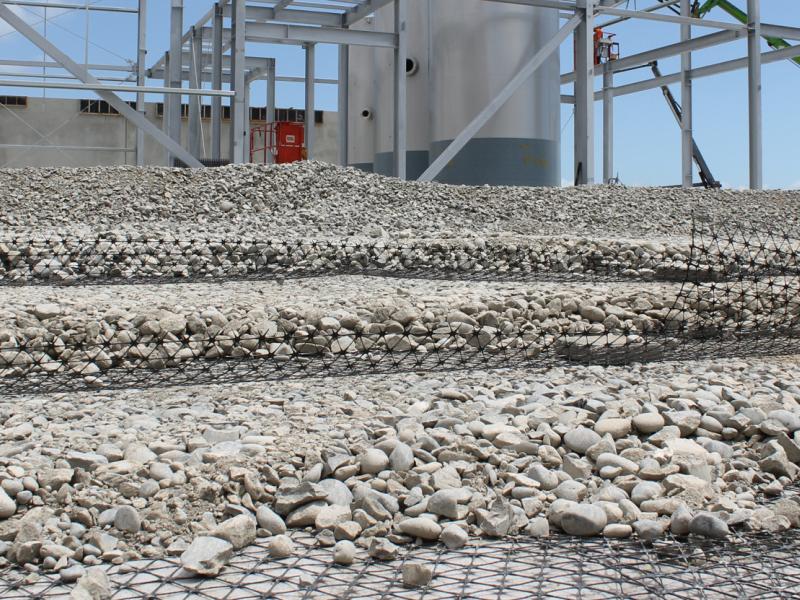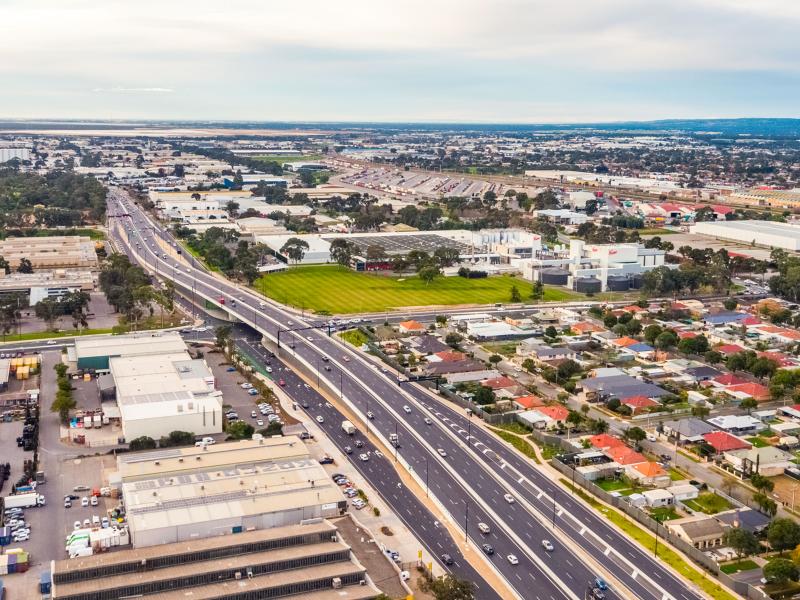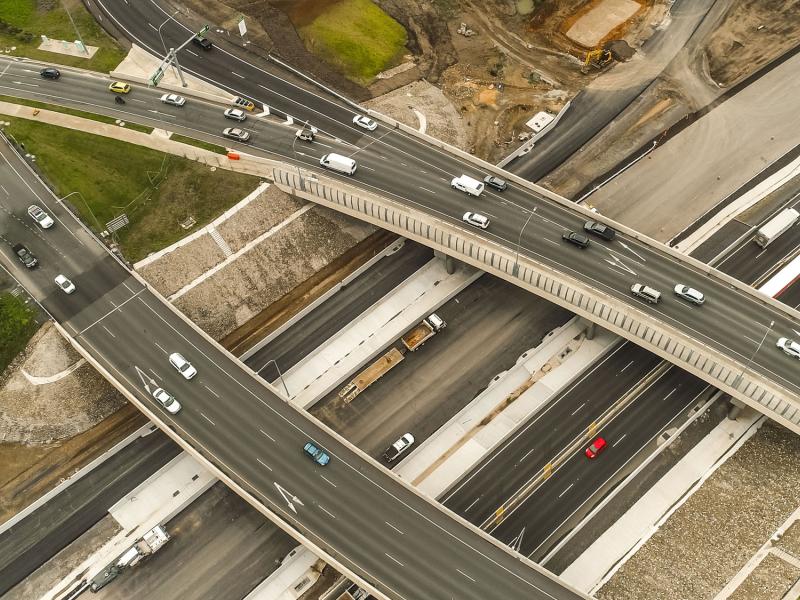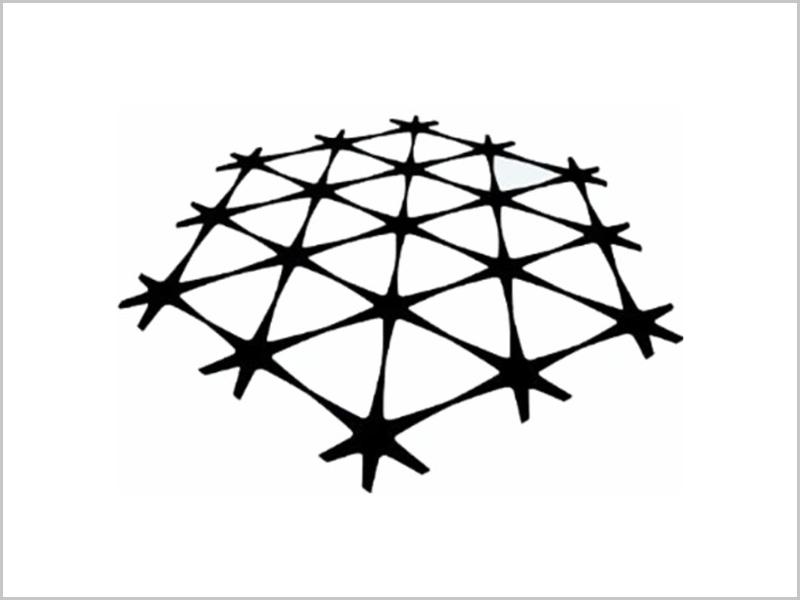
BUILDING A RAILWAY LINE FROM MELBOURNE DIRECT TO BRISBANE
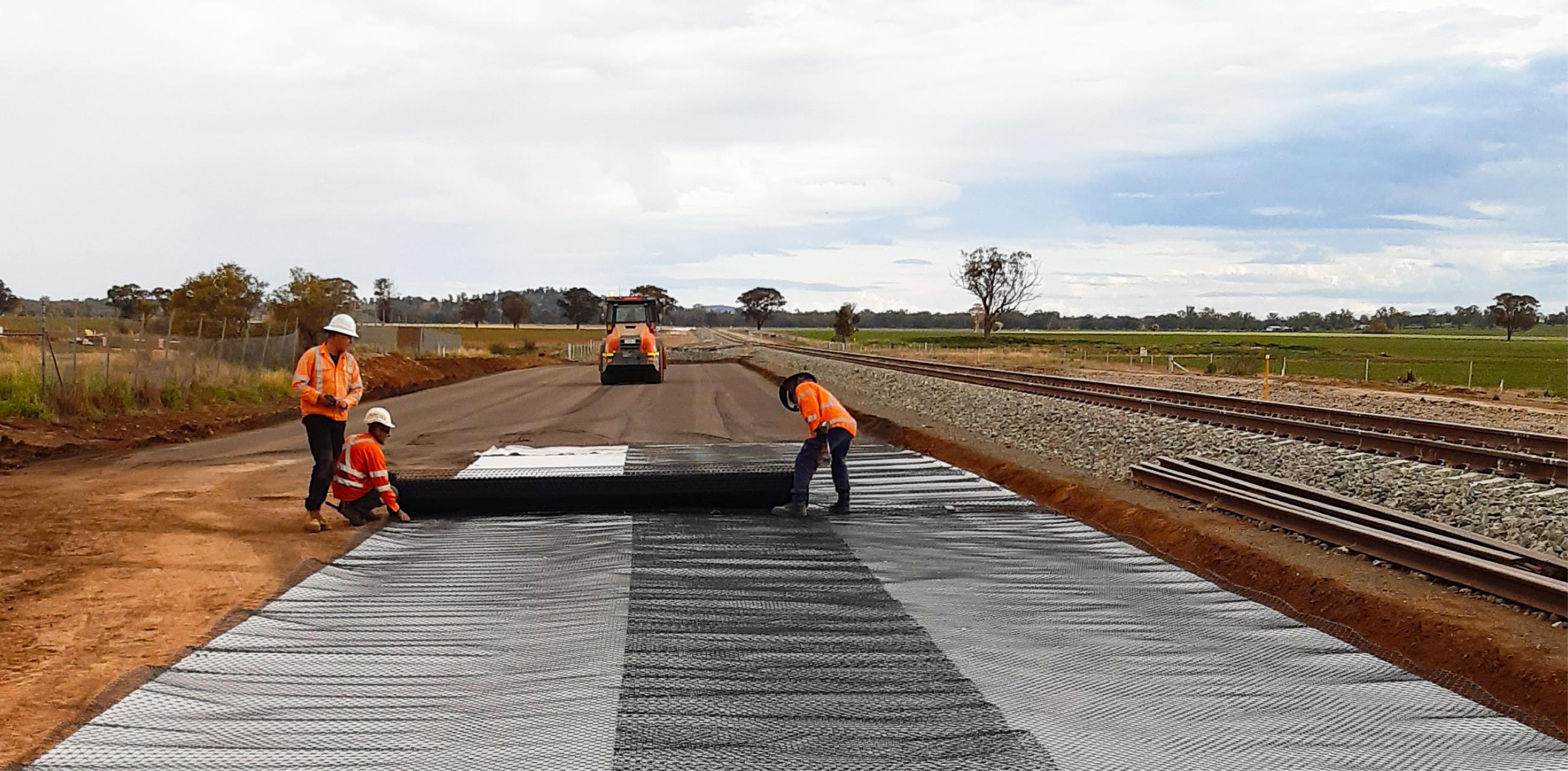
PROJECT DESCRIPTION
Inland Rail is a once-in-a-generation project, building a railway line from Melbourne direct to Brisbane through Parkes NSW. It will allow double stacked containers to travel in a transit time of 24 hours or less, competing directly with road transport. This project completes the national freight network between Melbourne and Brisbane via regional Victoria, NSW and Queensland.
5.3km of new rail was required to be constructed at Parkes to allow a link with the Sydney, Broken Hill and Perth railway lines. The remainder of the project required upgrading 98.4km of existing rail track, including a full rebuild of the rail tracks, rail formation and supporting structures in the exiting rail corridor.
Geofabrics met with the designers on numerous occasions to refine the foundation design of the railway, as construction was required to pass over weak subgrades. Various options were considered including the removal of poor subgrades.
OUR SOLUTION
Lime stabilisation and bidim A44 were used as a separation layer, while Tensar TriAx TX170 acted as a mechanical stabilisation layer under the capping layers.
Bidim A44 and Tensar TriAx TX170 can be flexibly deployed to reduce cost and save time compared to digging out soft subgrades and replacing with granular fill.
In total, 120,000 sqm of bidim A44 and 14,250 sq m of Tensar TriAx TX170 were used in the project. By using products sourced by Geofabrics, the project was constructed on time and within budget.
PRODUCTS USED
Tensar® TriAx® Triaxial Geogrid
The Tensar TriAx geogrid is the most advanced geogrid in today’s market and the result of 30 years continual innovation and development. It outperforms conventional biaxial geogrids and substantially reduces construction time and costs.
Tensar TriAx geogrid’s improved rib geometry and junction efficiency, greatly improves aggregate interlock and confinement – leading to improved structural performance of the mechanically stabilised layer
Bidim® Green
Geotextiles are commonly used in the rail sector to separate the capping layer from the ballast layer, providing separation and filtration.
Bidim geotextiles have a three-dimensional structure designed to improve drainage performance. Ideal for use in subsoil drainage systems, bidim geotextiles will allow the dissipation of pore water pressure which can have a detrimental effect on rail formation.
